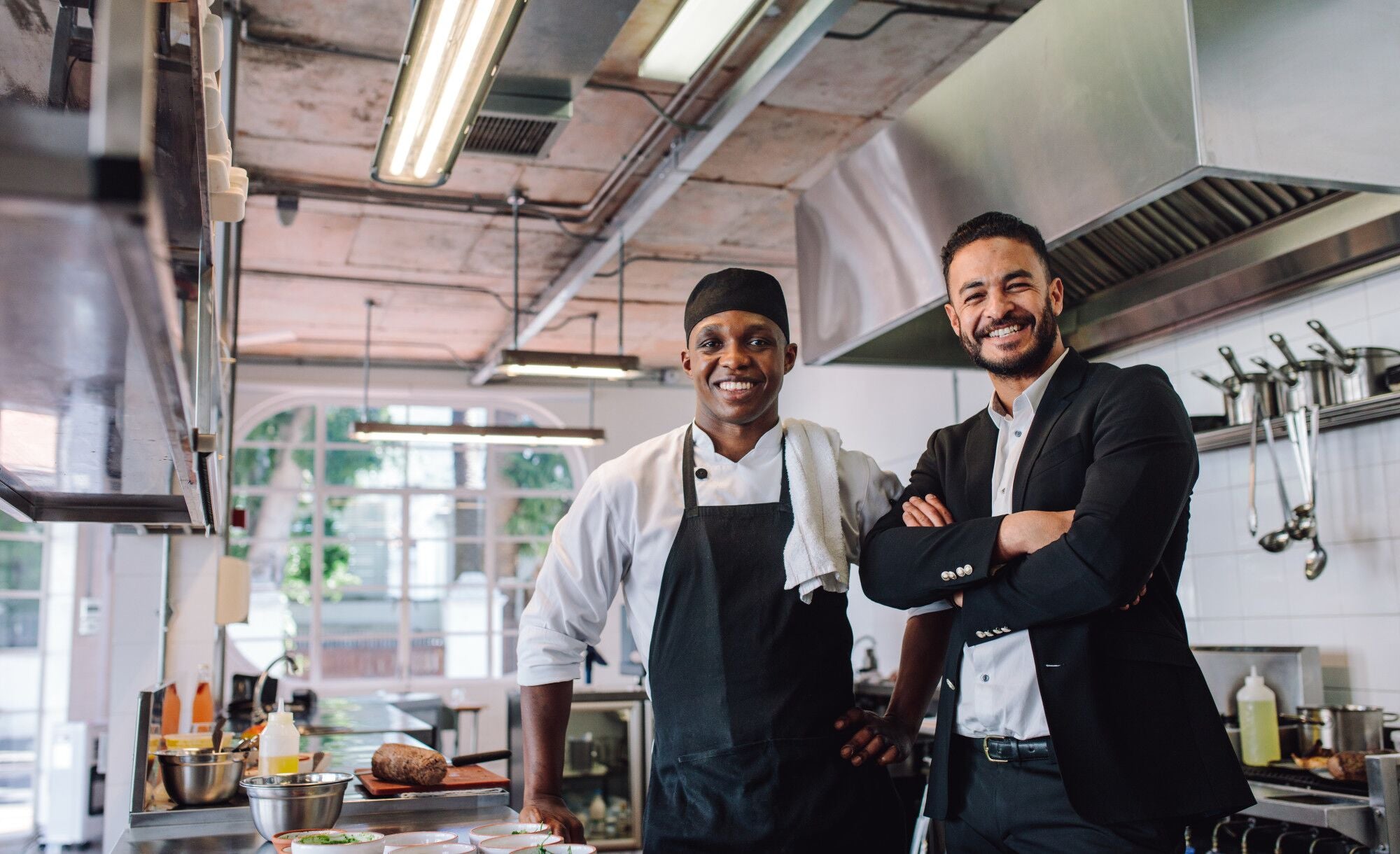
5 Ways to Offset Costs Increases in Your Restaurant
Share

Did you know that more than 10,000 independent restaurants closed down in 2017? That's right — and recent cost increases mean that many others could go the same way unless they find ways to save money. Are you worried about the future of your restaurant? Taking a good look at your budget and finding ways to offset rising costs is a smart move. While there are some variables you can't control, like the cost of certain ingredients, there are still plenty of steps you can take to stay financially healthy. Making small changes to cut down on food waste, increase employee retention, and drive more customers through the doors will help keep your restaurant sustainable for years to come. Keep reading for five expert tips to help offset costs in your restaurant.
1. Cut Down on Food Waste
Research shows that a single restaurant can produce approximately 25,000 to 75,000 pounds of food waste in just one year. That means that you could be spending a large chunk of your budget on ingredients which ultimately end up in the trash. On top of this, wasting food is bad for the environment and for your image. Cutting food waste isn't difficult and could save you a huge amount of money each month. Avoid Overstocking The first step is to avoid buying too much stock. Stick to the items you know your restaurant will use and don't be tempted by special offers for bulk orders unless you're certain it's an ingredient you'll use. If there's a dish on the menu that has expensive ingredients but is rarely ordered, considering replacing it with an option that won't generate as much waste. Ask staff to keep track of the ingredients which are wasted the most, and adjust your orders accordingly. If possible, cut down on ingredients which spoil quickly and replace them with longer-lasting options instead. Improve Food Storage Next, ensure that you're storing all your food correctly. That means keeping ingredients at the right temperature, using packaging that keeps food fresh, and keeping items on the right fridge and freezer shelves. It's worth doing a little research, as you might find that items you were storing in the fridge keep better at room temperature, and vice versa. Additionally, some foods, like bananas, can cause other foods to go bad faster when they're stored together. Putting a good storage system in place will make your ingredients last much longer. Keep a Thorough Inventory Keep a detailed inventory of your stock at all times to prevent over-buying. If you don't have an inventory, it's almost impossible to identify opportunities for improvement. Try using the FIFO method to use stock in the right order. FIFO stands for 'first in, first out', and means that you place older stock in front of newer stock, to use up before it goes bad. The FIFO method works well with raw ingredients and packaged food. Finally, look at your current portion sizes. Do customers regularly leave lots of food on their plates? If so, it might be time to decrease portion sizes to reduce waste and increase profits. Keeping a good inventory, ordering wisely, and storing food correctly could save your restaurant a small fortune.
2. Reduce Staff Turnover
The restaurant industry is known for high staff turnover, with 59% of restaurant operators naming staffing as a top challenge to success. If you're constantly training staff, having them quit, then having to rehire and train a new person, you soon end up spending a huge chunk of your budget on staffing. Taking steps to reduce staff turnover and boost employee loyalty is a really effective way to save money and improve performance. First, try to identify what prompts staff to quit. Is it because rival restaurants offer better wages or shift patterns? Or is there a problem with your workplace culture? Sending out an anonymous survey is a good way to get honest feedback and figure out where to make changes. You could also reach out to ex-employees and ask what made them leave. Simple changes like more flexible working hours, better training, or slightly higher wages could make a huge difference. While implementing these things costs money, it will benefit you in the long-term. Running 'employee of the month' initiatives and giving out rewards for good performance is another great way to boost morale and increase loyalty. If your restaurant becomes known for treating staff impeccably, then you'll find it easier to hire and retain the top talent — saving you money and improving your business.
3. Use Digital Menus and Signs
Does your current serving strategy require members of staff to greet customers, show them to their table, take their orders, and serve their food? Implementing digital menus and signs can reduce the number of steps in this process, meaning that you don't need to hire as many staff members. This is really helpful if your budget is tight. Touch screen menus can send customer orders straight to the kitchen without any involvement from front-of-house staff, saving valuable time and money. Digital menus also give more control to customers and make it easier to display allergen information. This makes your restaurant safer and more appealing to diners with special dietary needs. You'll also be able to make changes according to the cost and availability of ingredients at different times of the year. You won't have to waste money printing out new menus each time you make a minor change, and you'll also be helping the environment by using less paper and plastic. Having digital menus at tables allows you to promote special dishes and events, which should increase the amount that customers spend. Many diners actively seek out restaurants with up-to-date ordering technology, so you might also increase the number of customers coming through your doors each night. While digital menus and signs are a big investment, they're almost guaranteed to cut costs in the long run.
4. Switch to Rechargeable Flameless Candles
You don't have to make huge changes to significantly impact your bottom line. Small switches, like using rechargeable flameless candles instead of buying new wax candles daily, will make a bigger difference than you'd expect. Flameless candles look extremely realistic and will last an entire shift without running out of charge. You won't need to spend money on new batteries, because they're easy to recharge in bulk at an induction charging station. The candles come with a remote control, making it easy to control the ambiance of your entire restaurant with the touch of a button. They're fully waterproof, so won't be damaged by accidental spillages. They also reduce your risk of accidental fires, which makes your restaurant safer and could save you a fortune on fixing fire damage. Purchasing a flameless candle starter set gives you everything you need to make the switch with minimal hassle. With flameless candles, your staff will no longer have to waste time lighting candles one by one, you won't have to keep re-purchasing wax candles, and you eliminate the risk of costly fire damage. Once you've switched to flameless candles, you'll wonder why you didn't do it years ago.
5. Run Special Events and Sell Tickets
Running special events is an excellent way to offset costs and increase custom at your restaurant. You'll be able to charge for tickets and make money from the food you sell, so it's a win-win. The type of event you decide you run will depend on the style of your restaurant, your location, and your target market. If you're in a student area, events like quiz nights and open mics should go down well. If you cater to older diners, themed 'decade' nights and wine tastings might be popular. Events themed around holidays like Easter, Halloween and Christmas should go down well in most restaurants. Create a seasonal calendar so that you can plan events well ahead of time. Singles nights are another great option that cost almost nothing and only require a little extra organizational work. If you're in a location close to lots of offices, running special lunchtime deals and happy hour events is another great way to boost your revenue. Running events isn't rocket science and it's a great way to make extra cash, so step outside of your comfort zone and give it a go.
When Should You Look to Offset Costs at Your Restaurant?
Finding ways to offset costs in your restaurant makes sense if you're worried about your long-term viability. You don't have to be on the verge of closing down to start thinking about ways to make your restaurant more cost-effective. In fact, it makes a lot more sense to start implementing these tips before you're at rock bottom. If you have any concerns about your current financial situation, now is the time to take action. Create a plan that incorporates the steps above, then roll it out and assess the impact on your bottom line. You might be pleasantly surprised by how much these small changes can impact your profit margin.
Are you ready to take the first step towards offsetting rising costs at your restaurant? Visit our online store to purchase your first set of rechargeable candles today.
